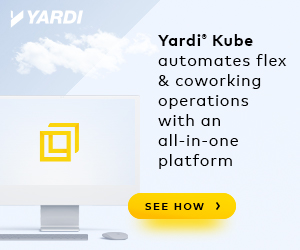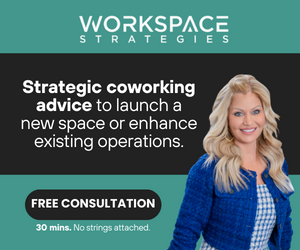- Organizations must consider strategic goals like productivity, work-life balance, and cost efficiencies when deciding on implementing a hybrid work model, using data-driven assessments and pilot programs.
- Both employees and employers must adapt to the challenges of a hybrid work environment, focusing on time management, productivity, and using technology to maintain team unity and effective communication.
- Successfully adopting hybrid work involves redesigning office spaces to accommodate fluctuating attendance, diverse work requirements, and a balance of individual and group work settings.
The latest trends are clear: employees want a hybrid work model, which leaves many companies deciding whether or not to implement it.
This work model is not just a response to global upheaval; it has signaled a serious shift in our understanding of productivity, ingenuity, and maybe most significantly, the way that people connect.
Born from the necessity of a health crisis and enabled by better technology, its outcomes have been transformative. For companies looking to implement a hybrid work model, here are some strategies for success.
How is the hybrid model different?
Hybrid work consists of a flexible arrangement where employees split their time between working at an office and working remotely from their home or another location. The proportion of in-office versus remote work can vary based on the organization’s policies and the employee’s role or preferences.
Remote work, on the other hand, implies that employees work exclusively outside the traditional office environment (typically from home). While remote work focuses purely on offsite operations, hybrid work maintains a link to the physical office, providing a blend of remote and on-site experiences.
Adapting to each of these models requires different approaches because hybrid work still requires considerations for physical office space, in-person collaborations, and maintaining a company culture with face-to-face interactions. Remote work demands a complete reliance on technology to bridge the physical gap between team members.
In adapting a work environment to a hybrid model versus a remote model, it’s important to acknowledge that a hybrid approach maintains elements of both traditional and remote workplaces. This duality means that adaptations must be fluid enough to cater to both scenarios. For instance, redesigning office spaces for hot-desking facilitates the intermittent presence of employees, while having robust digital infrastructure supports remote work.
How should an organization decide if it should implement a hybrid work model?
When an organization is deciding whether to implement a hybrid work model, it needs to first begin by clarifying the strategic objectives the model aims to serve, such as increased productivity, improved work-life balance, or cost savings on office space.
A data-informed assessment should be conducted, encompassing both quantitative metrics (such as employee performance data) and qualitative insights (such as employee satisfaction surveys).
The next step involves considering the nature of the work itself; roles that require collaborative, hands-on interaction may not be as well-suited to remote work as those that are more independent or digitally based. The organization also needs to evaluate its existing infrastructure and readiness to support hybrid work, including technology platforms for collaboration, cyber security measures, and managerial capabilities for leading distributed teams.
Lastly, by piloting the model in selected departments or roles, the organization can gather real-world data to inform a scalable, equitable implementation that addresses potential disparities in access or impact across different employee groups. This approach allows the organization to make a calculated decision that aligns with its specific needs and goals, while also being flexible enough to adapt to feedback and evolving circumstances.
For employers, the strategies to support a hybrid model include:
1.Provide Clear Policies
Establish clear guidelines for hybrid working to avoid confusion. This includes expectations for in-office attendance, availability during work hours, and communication protocols.
2.Encourage Flexibility
One of the advantages of hybrid work is flexibility. Employers should support flexible schedules where possible, understanding that not every employee’s personal circumstances are the same.
3.Invest in Technology
Just as employees need to leverage technology, employers should ensure the necessary tools and infrastructure are in place to support a hybrid model, such as high-speed internet to secure VPNs for remote access.
4.Promote Engagement and Culture
To maintain a cohesive company culture, employers need to find ways to engage employees both virtually and in person. This could include virtual team-building activities as well as periodic in-office events.
5.Focus on Output, Not Hours
Shift the focus from the number of hours worked to the quality and efficiency of the work completed — outcome-based assessments are more fitting for a hybrid work model.
For employees adapting to a hybrid work environment, focusing on these areas is particularly beneficial:
1.Work-Life Balance
Establish clear boundaries between work hours and personal time. The blur between home and office in a hybrid model can lead to overwork or stress if not managed properly.
2.Effective Communication
Develop strong communication skills to ensure clarity whether you are working remotely or in-office. This includes being proficient in written communication for asynchronous work and verbal communication for virtual or in-person meetings.
3.Time Management
Be proactive with time management, particularly on remote workdays. Without the structure of an office environment, it can be easy to either procrastinate or not take adequate breaks.
4.Leverage Technology
Become proficient with digital collaboration tools and platforms. While these are also crucial in remote work, hybrid work requires seamless transitions between using these tools at home and in-office setups.
5.Take Initiative
In a hybrid setup, face-to-face opportunities with colleagues and managers happen less frequently. It’s important to take initiative in reaching out and staying visible within the team.
The importance of agreement on the hybrid model
As for employees, adapting to a hybrid work environment involves addressing challenges that are unique to this blend of home and office work. Employees must become adept at managing their time and maintaining productivity without the inherent structure of the office, while employers need to ensure that the hybrid model doesn’t create a divide between remote and on-site workers. Both must commit to open communication and use technology effectively to keep the team unified and functioning well, regardless of where the work is getting done.
“The benefit to planning out how to support hybrid workers in all scenarios and environments is clear: employees will be less stressed and more productive when leaders are there to support them through flexibility, resources, and technologies that provide seamless and natural conversation through devices,” Josh Blalock, Chief Video Evangelist at Jabra told Allwork.Space. “Not only does enhanced productivity mean better results for the business, but it will also help employees become happier and more engaged — directly contributing to talent retention,”
On the flip side, not building a plan around hybrid work creates an issue that can easily be avoided for most companies.
“Understanding where and in what environments employees are working in is key, as this will inform an organization about what tools and technologies are needed to support them in seamless collaboration,” Blalock added. “Employees will notice when there are roadblocks to productivity and clear communication, and over time, this will become wearisome and push many to look for other opportunities.”
Essentially, workers just want to choose a work environment that helps them best work alone and with others. It’s best left up to employers to define this collaboration.
“The reality is, workers want to be in the office but, when they are there, often find themselves sitting isolated from people they work with or sitting in empty conference rooms talking to people on Zoom,” Micah Remley, CEO of Robin, told Allwork.Space. “Workers want to come to the office for different experiences than they get when they work-from-home.”
“If employers want to get teams back together in-person they need to ensure their space is set up for better, more effective days in the office. Defining collaboration as a priority lays a strong foundation for your workplace to be a more innovative, productive place,” he explained.
“If employers want to get teams back together in-person they need to ensure their space is set up for better, more effective days in the office. Defining collaboration as a priority lays a strong foundation for your workplace to be a more innovative, productive place,” he explained.
Preparing for hybrid challenges
Brian Wilson, CEO and Co-founder of office furniture brand Pair, told Allwork.Space that hybrid work is a reality, regardless of employer preferences.
“It seems unlikely that we will return to the pre-pandemic office culture entirely. The question now is: How can we get the hybrid office right? The draw to the office lies in in-person interactions with colleagues and clients, access to technology and tools otherwise not available at home — and the overall collaborative atmosphere it fosters,” he said.
However, according to Wilson, the challenge many companies are facing include:
- Redesigning the office to adjust to the peaks and valleys of employee attendance
- Addressing the needs of specific roles if the office has unassigned seating
- Striking a balance between individual and group work settings
- Providing a mix of privacy and open plan settings through varied postures (i.e., soft seating lounge areas, desks, etc.)
“Hybrid work offers an opportunity for companies to downsize their real estate footprint, with the assumption that most employees will share desks and visit the office only a few days a week,” Wilson told Allwork.Space. “Achieving the right balance between space utilization and employee needs requires a rigorous approach to design and programming, which was an unfamiliar territory for many pre-pandemic.”
“Achieving the right balance between space utilization and employee needs requires a rigorous approach to design and programming, which was an unfamiliar territory for many pre-pandemic.”
Office attendance changes during the week can cause problems like not having enough desks or the office setup not matching what workers desire, so it’s important for organizations/employers to know the kinds of jobs people are doing and when the office is busiest.
Collecting information with prop-tech tools — like tracking when employees swipe into the building, watching how they use the space, etc. — can help make the office a better place to work, and meet the needs of its people.
“Finding the right mix of work settings is critical. For example, a technology company we’re working with recently implemented a hybrid strategy and soon discovered that their predominantly software engineering team required more desks than initially anticipated,” Wilson said. “The original floor plan featured a blended mix of lounge seating in the open plan neighborhoods and a reduced number of desks at a 3 employees to 1 desk ratio, which was soon adjusted by removing lounge furniture and adding desks with monitors. These adjustments further highlight the importance of understanding user requirements and attendance patterns. We’re seeing that the trend for hybrid is finding the right blend of hospitality settings, communal areas, desks, and meeting spaces.”
Effectively making the change to a hybrid work model hinges entirely on finding the right blend of settings and policies for your teams. Company-wide policies, while they play a part, should be set based on what teams actually need to do their jobs to the best of their ability.
After all, it’s building employee buy-in that brings out the fullest benefits of hybrid work — a happier, loyal, and more productive workforce.

 Dr. Gleb Tsipursky – The Office Whisperer
Dr. Gleb Tsipursky – The Office Whisperer Cat Johnson – Coworking Marketing Maven
Cat Johnson – Coworking Marketing Maven Angela Howard – Culture Expert
Angela Howard – Culture Expert Drew Jones – Design & Innovation
Drew Jones – Design & Innovation Andrea Pirrotti-Dranchak – Competitive Advantage
Andrea Pirrotti-Dranchak – Competitive Advantage Jonathan Price – CRE & Flex Expert
Jonathan Price – CRE & Flex Expert Jeremy Fennema – Tech Innovation Alchemist
Jeremy Fennema – Tech Innovation Alchemist







